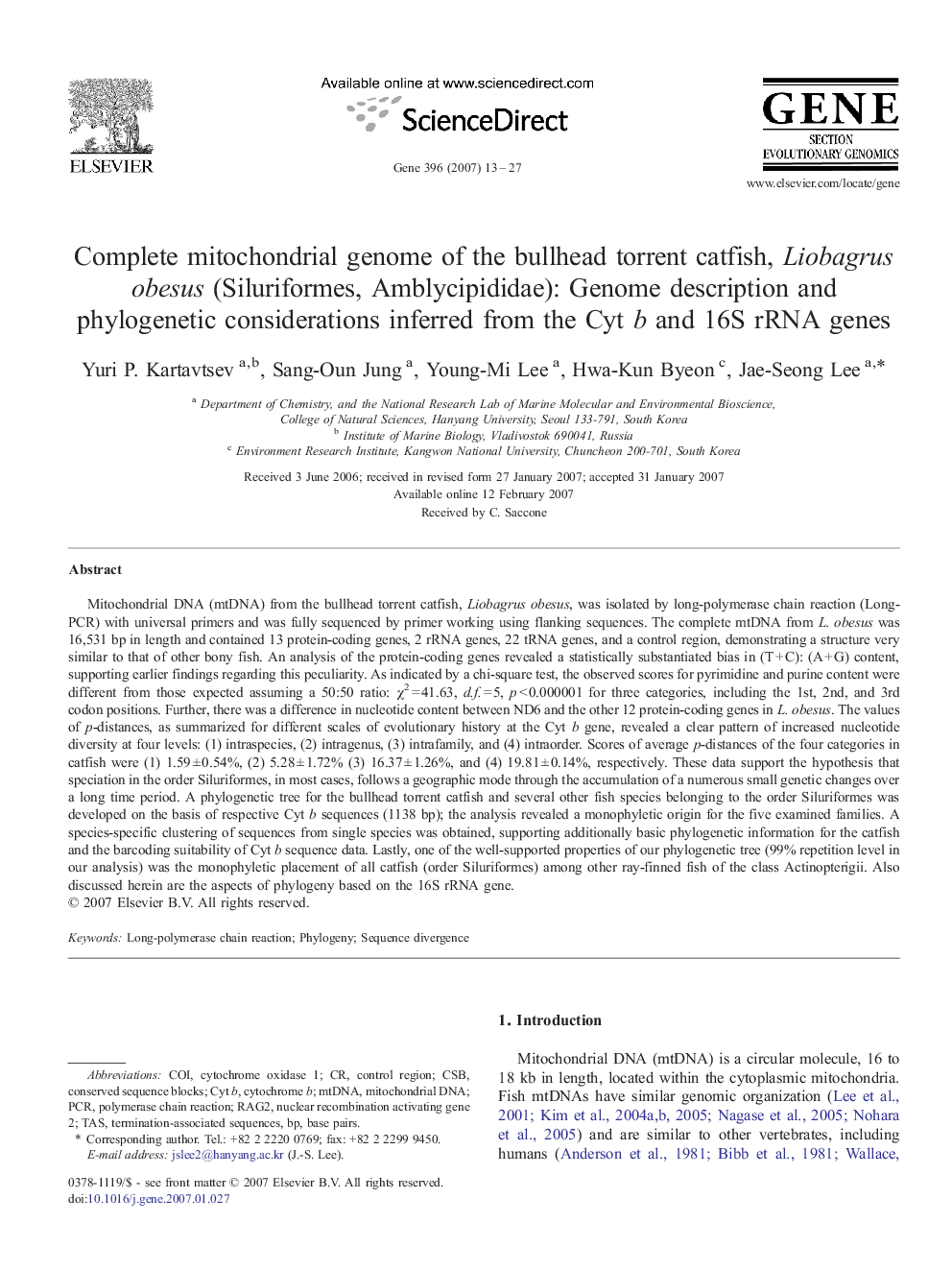| Article ID | Journal | Published Year | Pages | File Type |
|---|---|---|---|---|
| 2819581 | Gene | 2007 | 15 Pages |
Mitochondrial DNA (mtDNA) from the bullhead torrent catfish, Liobagrus obesus, was isolated by long-polymerase chain reaction (Long-PCR) with universal primers and was fully sequenced by primer working using flanking sequences. The complete mtDNA from L. obesus was 16,531 bp in length and contained 13 protein-coding genes, 2 rRNA genes, 22 tRNA genes, and a control region, demonstrating a structure very similar to that of other bony fish. An analysis of the protein-coding genes revealed a statistically substantiated bias in (T + C): (A + G) content, supporting earlier findings regarding this peculiarity. As indicated by a chi-square test, the observed scores for pyrimidine and purine content were different from those expected assuming a 50:50 ratio: χ2 = 41.63, d.f. = 5, p < 0.000001 for three categories, including the 1st, 2nd, and 3rd codon positions. Further, there was a difference in nucleotide content between ND6 and the other 12 protein-coding genes in L. obesus. The values of p-distances, as summarized for different scales of evolutionary history at the Cyt b gene, revealed a clear pattern of increased nucleotide diversity at four levels: (1) intraspecies, (2) intragenus, (3) intrafamily, and (4) intraorder. Scores of average p-distances of the four categories in catfish were (1) 1.59 ± 0.54%, (2) 5.28 ± 1.72% (3) 16.37 ± 1.26%, and (4) 19.81 ± 0.14%, respectively. These data support the hypothesis that speciation in the order Siluriformes, in most cases, follows a geographic mode through the accumulation of a numerous small genetic changes over a long time period. A phylogenetic tree for the bullhead torrent catfish and several other fish species belonging to the order Siluriformes was developed on the basis of respective Cyt b sequences (1138 bp); the analysis revealed a monophyletic origin for the five examined families. A species-specific clustering of sequences from single species was obtained, supporting additionally basic phylogenetic information for the catfish and the barcoding suitability of Cyt b sequence data. Lastly, one of the well-supported properties of our phylogenetic tree (99% repetition level in our analysis) was the monophyletic placement of all catfish (order Siluriformes) among other ray-finned fish of the class Actinopterigii. Also discussed herein are the aspects of phylogeny based on the 16S rRNA gene.
